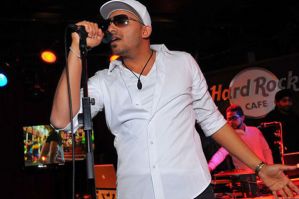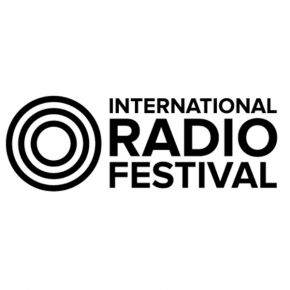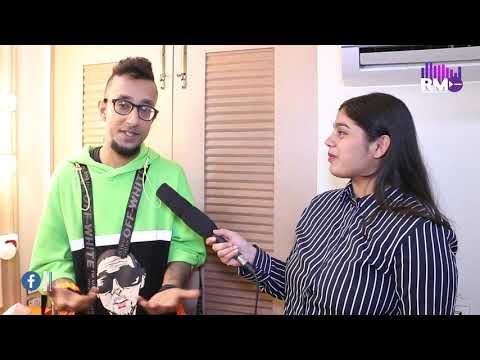Community Radio needs level playing field: Rohit Jagdale

Rohit Jagdale, CEO of Techno Creations and Consultant to Radio Nagar 90.4 FM, the first Community Radio Station (CRS) in Maharashtra which is on air for 18 hours, seven days a week, tells Poonam Ahuja of the challenges a CRS faces in its mission to reach, inform and educate its target community Government-stipulated curbs like a 5-minutes-per-hour ad inventory at an abysmally low ad rate of Re 1 per second, their short 5-year license periods and much lower powered transmitters are some of the biggest hurdles, all of which result in a topline that prohibits their ability to attract good professional talent. And with such restrictions and poor financial health, they are expected to alleviate the lives of the communities they touch. Excerpts.
Tell us about Radio Nagar 90.4 FM. How was it born, and why did you choose community radio for Snehalaya's mission in and around Ahmednagar?
Radio Nagar 90.4 FM was born of an idea given by the community itself. It is a part of Snehalaya, established by youth volunteers in 1989 to help change the lives of prostitutes, their offsprings, HIV-positive children and women, and other women and children living in slums, etcetera. These are some of the most neglected, hated and exploited social sections of our society.
Radio has become our medium of choice because Television and Print were was not giving due exposure to the basic issues of community and the work of Snehalaya, and anyways, most of our target communities are poor and illiterate, and not suited for printed and electronic communications. They neither purchase newspapers nor can pay the subscription of cable and television networks.
So the NGO realized we would need a low-cost medium that was understood by and available to our target audiences, and controlled by the community, because only then would the community be able to express its pains and perils confidently and fearlessly.
Radio has helped the community solve their own problems as well as convey the reactions to civil society and Government. Happily, it needs much lower investment, it is in the local Marathi language, and therefore enables our target community to raise basic issues in its own voice. It bridges our target community. But of course, there are several challenges too.
Before we discuss the challenges, tell us about Radio Nagar's programming. When and for how many hours do you go on air?
We are on air from 5 am to 11 pm. This is the first Community Radio Station (CRS) in Maharashtra which is on air for 18 hours, seven days a week.
Do you have enough content for 18 hours?
Yes, we do have content for 18 hours, but for a CRS like ours, what matters is how we present our content. Radio is now considered as a very primary source of entertainment, so we have designed our programming accordingly. We have adapted the presentation style of private FM radio stations, but have broken the barrier time for a link and extended it, so that we can present our content appropriately. To support the content we play songs too.
What kind of content do you air on your CRS Radio Nagar 90.4 FM?
Since the launch of the station we have covered topics like electricity, roads, garbage management, city transportation, different diseases, etc. These are essential and not easily available to a lot of the communities we reach. Early in the morning we have a special show for the elderly, called Dnyaneshwari.
In prime time we have a live show wherein we have started a Tumcha Awaaj segment, where people participate with views on different issues pertaining to the city.
In the afternoon band we have a special show wherein we have the participation of our different project coordinators and people from slums, HIV patients, prostitutes, children of prostitutes, under-privileged children
Late afternoons we have recorded programmes that deal with topics like books, interviews of different eminent personalities, poets, industrialists, etcetera from the city
In the evenings we have a live show which is specially designed for the youth of the city.
How do you design your programs?
That is done according to the target group requirements. Our main aim is to present the issues of the target group and give a strong platform for their voice. With current issues we also play Marathi and Hindi songs for the entertainment of target group.
Do songs form a large part of your programming?
Songs are an important aspect to be considered to stand up to commercial FM stations. We are not competing with commercial FM stations, because we are set up to serve the community. However, we have to become self-sustaining as quickly as possible. Obviously we don't have the kind of capital or the transmission power that private FM stations have. But we have to acquire listenership within our target community, which has the opportunity to listen to private FM also.
So, to increase the listener ratio we have planned to air only Marathi songs which these commercial FM stations usually do not broadcast. This is one way to create your listeners class in the community The common listener likes this initiative as these songs are not heard elsewhere.
Who are the RJs who host your shows?
We don't call them RJs; here, they are CJs, or Community Jockeys. Our CJs are handpicked from the community we serve. All of our staff is from a non-radio-professional background. We have some sex workers as our Co-CJs who participate in our afternoon shows and share their views on the on-going topics. This is the first CRS that is working with and for the sex workers of the community.
What is your reach like?
We reach our community within a radius of 15 kilometers. This covers our target community and also the entire Ahmednagar city, with the added advantage of some nearby villages.
Have you tied up with any cellular advertiser for SMS service etc, considering cell phones are now available to and used by nearly everyone across all demographics?
No, currently we have no tie-up with any cellular advertiser for SMS or any other service. But yes, we have a landline number where the community calls us with suggestions, complaints, opinions and issues, which are recorded and utilized in the programmes later.
You have an internet and Facebook presence too. Tell us about it.
Yes, you can reach us on the internet at http://208.43.81.168:8624. A web page will appear where you can see the details of our station. You need to click on the M3U button to start listening to Radio Nagar 90.4 FM. Sometimes, due to power outages or construction work going on near by, it is down. We have a good Facebook presence too -- Radio Nagar 90.4 Fm Awaj Tumcha
What do you believe is essential for the success of a CRS?
Participation of the community is critical for a Community Radio to work properly. The core team of a Community Radio brings in the participation of the community into the programming. Unlike private Radio, which concentrates more on entertainment with very few specific social-issues, Community Radio gives 100 percent space to social issues and gets into the root of a problem, and entertainment is a very distant second priority…
But private FM too is faced with its own constraints and still manages to remain socially responsible and active to quite an extent…
Yes, they do give space to specific social issues, but do not get to the root of any issue. They have to concentrate more on the entertainment aspect Community Radio gives all its space and energies for social issues, and entertainment is very secondary.
How do you manage your CRS and fund its working?
The organization has appointed a core team to manage our station. It includes a Station Head, Programming Head, Director - Radio, and the Trustees of the organization.
The funds for the working are generated through advertisements, and some provisions for petty cash by our organization, but this is for a limited period till the station gets self-sufficient.
Once the revenue generated through advertisements is sufficient enough to manage all the expenses the provision for petty cash will stop and station will hopefully sustain itself. We utilize the revenue generated through advertisement for salary and expenses like electricity bills, phone bills, music royalty, stationery and pantry.
How do you plan to cash in on advertising?
We have formulated some plans for the clients in Ahmednagar for advertising on Radio Nagar. These plans are comparatively cheaper and give more benefit to the client than private players.
Will just planning and strategizing to get more advertising suffice, or do you need a better playing field for advertising and operations for Community Radio from the government?
We would certainly be much better off with a level playing field. Community Radio faces several challenges.
The government has stipulated Community Radio can accept advertisements of only up to five minutes per hour. There are no such restrictions on private FM.
Another major challenge is to get equal transmission power as that of any commercial FM station. The CRS has a very low transmission power and this makes it difficult to reach out to the community or to cover the nearby areas of the community the CR serves.
The next challenge is of skilled manpower. Professionals do not look towards CR as they are non-profit initiatives. Compared to commercial FM the pay scales offered to employees in CR are very low
Not every Community Radio is capable enough to market its station. Due to low power transmission, it is difficult for Community Radio to generate revenue. The corporates that spend the most on commercial FM stations turn their back towards Community Radio. So Community Radio has to concentrate more on the local business. There is a limit to the local business too, and most times we are unable to reach a monthly break-even.
Another major challenge is that of content generation. It is a major task to cover your transmission duration. In the initial stages you get good content to fill your transmission time. But as time passes, a CRS may run short of content and then other non-relevant content starts creeping in on-air, which is hazardous for a CRS. This may also result in termination of the license.
Yet another big challenge is that Community Radio is currently given a license term of five years only, which is half of the license term given to commercial FM stations. It is necessary to increase the license term to strengthen the Community Radio movement in the country. Increasing the license term will help the Community Radio achieve the target for what it was established and serve the community
It is always difficult to get the advertisements from the government, but recently DAVP announced it will enlist Community Radio to get these commercials. This will assure the CRS some minimum revenue for their sustenance, but the rate given by DAVP is Rupee 1 per second. We want it to be increased to at least Rs 10 per second, and happily, the government has agreed to look into this important need at the recent Community Radio meet in Delhi .
How many CRSs do we have in India today?
As per data available with Ministry for Information and Broadcasting website the current operational Community Radio in India are Educational Institutions -- 71, NGOs- 24, KVKs & SAUs- 8, so a total of 103 CRs. There are two CRSs in Ahmednagar district and one in Ahmednagar City .
What is the initial cost of setting up a Community Radio?
Compared to commercial FM stations the initial cost of a Community Radio is negligible. Set-up cost depends on the type of equipment and studio infrastructure an organization opts for. To set up a CRS, on an average, Rs. 15 to 18 lakhs are required for all government fees, studio equipments, studio acoustics, tower, transmitter and office infrastructure.
What are your plans for 2011?
This is our first year and we plan to concentrate on establishing ourselves on air. For this we have planned various ground activities to complement our on-air programming. These ground activities are planned to generate participation of the Community and increase the number of listeners and the time they spend on the station. Increase in the listeners eventually impacts your revenue and helps you become self-sustainable.
Are you working towards setting up other CRSs?
Yes, we would like to do that. We have some professionals consulting our CR. For the aspirants who want to set up Community Radio we can share all the necessary information on the procedure, budgeting, infrastructure development, equipments and also in programming and training.














